The memristor, a resistor with memory retention capability, is a newly discovered circuit element that is useful for non-magnetic non-volatile memory and logic operations for traditional computation. Additionally, it emulates short- and long-term plasticity of biological synapses, making it an ideal component for unconventional ultrafast neuromorphic (brain-inspired) computing. An ultrathin low-power memristor can be a strong candidate for replacing today’s …
Honours Project: Quantum engines in many-body systems
In recent years, many concepts belonging to thermodynamics have been translated to quantum systems. While the description of such systems is often highly abstract, this project will explore some of these ideas in the context of physically realisable many-body quantum systems. Supervisor: A/Prof. Meera Parish and Dr Jesper Levinsen See https://www.monash.edu/science/schools/physics/honours/honours-project to apply.
Honours Project: Periodically driven many-body quantum systems
Periodic driving of a system endows it with a temporal periodicity, much like crystal lattices that have a spatial periodicity. Yet, periodic driving yields a variety of tuning knobs which can in principle allow one to investigate physics that is difficult to access in any equilibrium system. Indeed, even though there is only one time dimension, one can even make …
Honours Project: Is dark matter superfluid light
There are numerous observations shedding light on the properties of dark matter, however its decomposition is unknown. Based on its known properties, we examine whether dark matter can be superfluid light. Our speculation is motivated by the recent observations of Bose-Einstein condensation of photons [1] and by the successes of the bosonic star dark matter models [2]. In this project, …
Honours Project: Interplay between Dirac electrons and magnetic textures in topological insulators
Topological insulators (TI) represent a new state of quantum matter. TIs have insulating bulk (like an ordinary insulator) and exotic metallic surface states. These states are described by a relativistic-like Dirac equation for massless particles that models their unconvenitional behaviour. In particular, the direction of electron spin for Dirac electron is perfectly correlated (or locked) with the direction of its …
Honours Project: Imaging electron waves on the surface of a 2D semiconductor
Scanning tunnelling spectroscopy (STS), combined with scanning tunnelling microscopy (STM), is a powerful tool to explore a material’s electronic properties in real space, as it allows probing the local electronic density of states (DOS) with atomic resolution. STS can visualize spatial modulations of the electronic states, and capture collective phenomena like standing wave patterns originating from electrons scattering off defects. …
Honours Project: Excitonic superfluidity in electron-hole bilayers
Superconductivity and superfluidity are macroscopic quantum phenomena that are observed at low temperatures. Bringing them to room temperatures is the Holy Grail in physics. One prospective system is a double layered semiconductor structure with spatially separated electrons and holes (holes are empty electronic states that can be treated as particles with positive charges). Attractive Coulomb interactions can bind them to …
Honours Project: Epitaxial growth of a 2D TMD
Topological materials, like topological insulators and topological Weyl semimetals, are a new classes of matter with unusual electronic properties: Weyl semimetals have Weyl points in their bandstructures, around which electrons behave as massless chiral particles (similar to neutrinos). Topological insulators are insulators in the bulk but have highly conducting massless helical electrons on their surfaces or edges. One way to …
Honours Project: Electrodynamics of Weyl semimetals
Weyl semimetals are new topological solids with protected massless Dirac electronic states in their bulk and exotic Fermi arc surface states. The electrodynamics of these materials have additional “axion” terms that can manifest as in transport as in optical phenomena and have attracted recently a lot of attention. The project is devoted to an analysis of a distribution of electric …
Honours Project: Developing high-performance 2D transistors
Atomically-thin transistors made by 2D semiconducting materials possess attractive electronic properties and have been seen as building blocks for next-generation semiconductor chips. This project aims to study the transport properties of 2D field-effect transistors, including carrier mobility and contact resistance. In particular, we will focus on optimising the metal-semiconductor junction. In other words, we will develop high-performance 2D transistors by …
Honours Project: Atomically thin materials coupled to light
The past couple of decades has seen a revolution in materials technology, the emergence of atomically thin materials. This was initiated by the discovery of graphene (2010 Nobel prize), but the field now comprises a range of different materials in the ultimate single-atom-thin limit. This project will focus on a particular class, the so-called transition metal dichalcogenides (TMDs), that possess …
Monash: Kagome Ferromagnets via ARPES
Supervisor: Dr Mark Edmonds Probing the electronic bandstructure of Kagome metals and superconductors The Kagome lattice TmXn (T: Fe, Mn, Co and X: Sn, Ge) is a two-dimensional (2D) network of corner-sharing triangles.The unique combination of lattice symmetry, spin–orbit coupling, and unusual magnetism in this system holds great promise for future electronics and spintronics applications. When considered as an isolated layer, …
Monash: Measuring Magnetic Topological Insulators via ARPES
Supervisor: Dr Mark Edmonds Realising new intrinsic magnetic topological insulators and heterostructures for lossless transport applications at high temperature Van der Waals materials have widely varying electronic properties including topological insulator (TI) behaviour (Bi2Se3/Bi2Te3), and ferromagnetism in 2D (CrI3). However, these materials are distinct i.e. they possess topological or magnetic properties but not both. The intrinsic magnetic topological insulator MnBi2Te4 was …
Monash: Magnetic and Electronic Properties of 2D and 3D Magnetic Topological Materials
Supervisors: Drs Mark Edmonds and Julie Karel Topological materials, such as topological insulators and topological Dirac semimetals, are a new class of matter that possess new and exciting electronic properties. Allowing a wide range of new physics to be explored and have the potential to create revolutionary new electronic devices that have the potential to transport charge through one-dimensional edge modes without dissipation. Our group has made a number …
Monash: Understanding the Electronic Properties of 2D Topological Materials
Supervisors: Drs Iolanda di Bernardo, Mark Edmonds and Prof Michael Fuhrer. Topological materials, such as topological insulators and topological Dirac semimetals, are a new class of matter that possess new and exciting electronic properties. Allowing a wide range of new physics to be explored including Majorana fermions and the Chiral anomaly to creating revolutionary new electronic devices that have the …
Monash: Transport/STM of 2D topological insulators
Supervisors: Prof. Michael Fuhrer, Mark Edmonds and Dr. Iolanda di Bernardo Two-dimensional topological insulators (such as ultrathin Na3Bi, Bi2Se3, Bi2Te3, WTe2 etc.) and transition metal dichalcogenides (MoS2, WSe2, etc.) belong to a remarkable class of new materials with unique quantum mechanical properties. They possess a large spin-orbit interaction, that couples their electron momentum and spin. In the case of topological …
UNSW: Topological electronics in atomically thin materials
Generously funded Scientia PhD Scholarships are available to study topological electronics in atomically thin materials. The research project will involve the fabrication and study of 2D topological materials. In 2010, the Nobel prize in physics was awarded for groundbreaking experiments on the atomically thin two-dimensional material graphene, which Geim and Novoselov showed could be made with sticky tape! Later, in 2016 …
Monash: Light transformed materials
Supervisors: Dr Gary Beane and Dr Agustin Schiffrin Progress in condensed matter physics is often driven by the discovery of novel materials. Topological materials are one such class of material, displaying unique quantum mechanical properties. Topological insulators (TIs) are a particular class of topological materials that are the subject of ongoing intense research interest. As they arise from a qualitatively …
Honours Project: Ultrafast dynamics of quantum matter
Understanding the response of quantum matter to changes in the system parameters is crucial in developing new technologies. Recent advances in ultracold atomic gases have enabled the systematic study of the fastest collective response possible in any quantum system (relative to system density). Specifically, the low particle density and large atom mass compared with electrons in solids means that the …
Honours Project: Towards topological electronics via assembly of 2D atomic legos
Topological insulators are a class of materials which are electronically insulating in the bulk and highly conducting at the surface. These special surface states provide unique access to highly mobile spin-polarised electrons, which makes these materials a desirable component for future electronics. This project aims to create an ultraclean, protected environment for the surface states of the layered topological insulating …
Honours Project: The ultra-relativistic particle in a box: electrons in atomically thin Na3Bi
Three-dimensional Dirac semi-metals such as Na3Bi are a new class of material where electrons behave as relativistic Dirac-like fermions, moving at constant velocity independent of energy, much like massless neutrinos. In the Fuhrer laboratory we utilize a low-temperature (4K) scanning tunnelling microscope (STM) equipped with a molecular beam epitaxy chamber to study Na3Bi grown under ultra-high vacuum conditions. The primary …
Honours Project: Strongly interacting SU(N) Fermi gases in one dimension
The one-dimensional Fermi gas with repulsive short-range interactions provides an important model of strong correlations in few- and many-particle systems. However, in the presence of a harmonic potential, no exact solution is known in general for strongly interacting fermions. We have recently shown that this problem in the regime of strong repulsion can be mapped onto a Heisenberg spin chain, …
Honours Project: Phase-Engineering of Atomically Thin Crystals
Graphene – an atomically thin sheet of carbon atoms – has attracted enormous scientific interest since its discovery in 2003. Awarded with the Nobel Prize only seven years after it was discovered, the material was soon hailed as the next disruptive technology due to superior attributes, being a zero-band gap Dirac semi-metal with large electron mobility. A related class of …
Honours Project: Optical trapping of microscopic water droplets for single molecule studies
Techniques for optically observing single molecules are extending and even changing our understanding of molecular processes in biology. Often, it is desirable to follow the dynamics of a single molecule for several seconds or longer. Methods have been developed to immobilize and isolate or confine single molecule in order to study their dynamics on such long time scales. One such …
Honours Project: Optical Lattices for ultracold atoms
Ultracold atoms can be trapped in an optical lattice, the periodic potential formed by optical standing waves. The atoms in the optical lattice exhibit behavior similar to electrons in an ideal crystal. By including the interaction of the atoms, such a system can be used to study many-body phenomena traditionally in the realm of solid-state physics. This project will investigate …
Honours Project: On-surface design of organic nanostructures with tailored optoelectronic functionality
On-surface supramolecular chemistry – through which molecular and atomic units interact and form well-defined geometries – holds promise for the fabrication of nanostructures with atomic-scale precision and tailored electronic properties [1]. This project consists of using approaches of supramolecular chemistry to synthesise low-dimensional organic and metal-organic nano-assemblies on surfaces. The goal is to achieve solid-state interfaces with atomically precise morphologies, …
Honours Project: Modelling the interaction of atoms with an optically trapped microsphere
The interaction of light with matter invariable involves the exchange of momentum. This exchange of momentum can be exploited to trap and remotely manipulate particles from the size of individual atoms to objects at the micron scale. Typically, the study of optical forces on these vastly different size objects is performed independently. The purpose of this project is to investigate …
Honours Project: Modelling the electronic structure of low-dimensional organic nanostructures on surfaces
Supramolecular and metal-organic self-assembly on surfaces holds promise for the synthesis of functional low-dimensional nanostructures with ultimate atomic-scale precision [1]. This approach consists of depositing atoms and functionalised organic molecules onto clean surfaces, in a controlled environment, to achieve well-defined configurations via programmed inter-adsorbate and adsorbate-surface interactions. Potential functionality of these nano-assemblies arise from their atomic-scale electronic structure, which is …
Honours Project: Miniaturisation of Electrical Devices for MBE growth and in-situ Transport Studies
Fuhrer, Hellerstedt and Edmonds have developed unique-in-the-world techniques to measure the electrical properties, such as resistivity and Hall effect, of a thin film of material during growth by molecular bean epitaxy (MBE) as well as post-growth without removing the sample from vacuum. This allows for studies of exotic materials that may be unstable on removal from vacuum. The current techniques …
Honours Project: Magnetoresistance of semiconductors in the non-linear regime
The change of electrical resistance in a magnetic field (i.e., the magetoresistance) is typically rather small in many materials, but it can have important technological applications when it is sizeable. For instance, the “giant magnetoresistance ” of magnetic multilayer structures provides the basis for magnetic sensors used in hard disks and other devices. However, magnetism is not the only route …
Honours Project: Low-dimensional organic nanostructures with topological electronic properties
Topological insulators are a novel class of materials with non-trivial electronic properties. Electrons at the boundaries of these materials can propagate without dissipating energy [1]. So far, topological phases have only been demonstrated in inorganic materials. The goal of this project is to synthesise and characterise low-dimensional organic nanostructures, in which the atomic-scale morphology and electronic structure give rise to …
Honours Project: Growth and Characterization of 2D Topological Materials
Topological materials, such as topological insulators and topological Dirac semimetals, are a new class of matter that possess new and exciting electronic properties. Allowing a wide range of new physics to be explored including Majorana fermions and the Chiral anomaly to create revolutionary new electronic devices that have the potential to transport charge through one-dimensional edge modes without dissipation. In …
Honours Project: Femtosecond atomic-scale dynamics on a surface
The advent of scanning tunnelling microscopy more than 30 years ago has allowed for real-space imaging of single atoms and molecules on a surface. Normally, this technique is able to study the equilibrium properties of a system, and does not allow to access real-time ultrafast dynamics occurring at femtosecond timescales. Indeed, the intrinsic time resolution of scanning tunnelling microscopy is …
Honours Project: Dynamics of single molecules in a nanotube
The cell is a crowded environment where complex chemical reactions take place, typically involving only a few numbers of molecules. While a number of these reactions have been studied in bulk assays or even at the single molecule level, the role of crowded environment or confinement has typically not been investigated. The goal of this project is to study the …
Honours Project: Atom based potentials for atomtronics
Atomtronics is an emerging research area that seeks to develop devices that will exploit the unique properties of ultracold atoms to deliver benefits over conventional technologies. Potentials based on optical fields are currently used to manipulate and pattern ultracold atoms, which limits feature sizes to the wavelength of light. This project would investigate potentials for ultracold atoms based on atom-atom …
Honours Project: Dirac Electronic Materials
Recently new materials have emerged in which the electron dynamics are described by the Dirac equation in two dimensions. An example is graphene, the two-dimensional honeycomb lattice of carbon atoms that is the basic building block of graphite. In graphene, the electrons obey a massless Dirac equation, with the role of the relativistic electron spin played by a spinor (“pseudospin”) …
Honours Project: Defects and artificial atoms in 2D semiconductors
Atomically thin semiconductors, materials comprised of surface only, have remarkable electronic and optical properties and allow us to study basic physical concepts in a well-controlled environment. Besides this, these materials are envisioned to be used in future types of electronics, making them attractive for both basic and applied research. In 2D semiconductors, donor impurities (ions) and their bound electron, as well …
Honours Project: Bound states in a heteronuclear fermi gas
The development of ultracold atomic gases with tunable interactions and dimensionality has led to a new era of precision studies of fundamental quantum mechanical phenomena. In the context of few-body bound states, experiments have until now focussed on bosons, which display the celebrated Efimov effect, where three identical bosons can form a fractal set of states related by a discrete …
Honours Project: Atomic-scale structural and electronic studies on light-harvesting metal-halide perovskites
Hybrid organic-inorganic perovskites are an emerging class of photovoltaic materials with the potential to outperform silicon [1]. Solar cells made of metal-halide perovskite offer material costs below $2/m2 and certified efficiencies beyond 20%. However, the underlying physical mechanisms allowing for strong light absorption and efficient electron-hole separation in metal-halide perovskites are not fully understood. In particular, very few studies have …
Honours Project: Experiments on two-dimensional quantum turbulence
Two-dimensional turbulence is even more fascinating than its three-dimensional counterpart. Here, the turbulent energy is predicted to go into the formation of increasingly larger size eddies and vortices in a so-called inverse energy cascade process. Hence 2D turbulence exhibits a peculiar self-organization, giving rise to order out of chaos. This project will involve investigating two-dimensional turbulence in a superfluid atomic …
Monash: Growth and Characterization of 2D Topological Materials
Supervisors: Mark Edmonds and Prof Michael Fuhrer. Topological materials, such as topological insulators and topological Dirac semimetals, are a new class of matter that possess new and exciting electronic properties, allowing a wide range of new physics to be explored including Majorana fermions and the Chiral anomaly to creating revolutionary new electronic devices that have the potential to transport charge …
UNSW: Hole based quantum semiconductor devices
Supervisor: A/Prof. Alex Hamilton The spin-orbit interaction is central to topological insulators, Majorana fermions, and even the formation of artificial topological insulators from conventional semiconductors. The spin-orbit interaction couples the motion of an electron with it’s magnetic dipole moment – essentially generating an effective magnetic field that is proportional to the electron’s momentum. Galllium-Arsenide is the cleanest material system from …
UNSW: Mesoscopic devices in oxide heterostructure based 2D electron systems
Supervisor: A/Prof. Alex Hamilton The conducting interface between the two insulating oxides LaAlO3 and SrTiO3 (LAO/STO) exhibits many intriguing properties such as high mobility, a gate-tunable superconducting phase, ferroelectricity and ferromagnetism. The aim of this project, working in in close collaboration with FLEET colleagues in Materials science at UNSW, is to develop new techniques for fabricating nanoscale devices at the …
Swinburne: Floquet topological superfluidity in a 2D Fermi gas
Supervisor: Chris Vale, Paul Dyke The aim of this project is to study Floquet topological superfluidity using 2D gases of lithium-6 atoms in the vicinity of a p-wave Feshbach resonance. Experiments to date have found that gases prepared near a p-wave resonance become unstable due to inelastic losses. Recent theoretical work has identified a potential way to overcome these losses …
Swinburne: Topological superfluidity in ultracold atomic gases
Supervisor: Chris Vale, Sascha Hoinka, Carlos Kuhn The aim of this project is to produce a topological superfluid using a gas of ultracold dysprosium atoms in a quantum gas microscope. Dysprosium, with its long-range and anisotropic dipolar interactions, may provide new pathways for creating unconventional superfluids, with non-trivial topology. This project will involve working on a new experiment, currently being …
Monash: Atomic-scale structural, electronic and optoelectronic studies on light-harvesting metal-halide perovskites
Supervisor: Dr Agustin Schiffrin Hybrid organic-inorganic perovskites are an emerging class of photovoltaic materials with the potential to outperform silicon. Solar cells made of metal-halide perovskite offer material costs below $2/m2 and certified efficiencies beyond 20%. However, the underlying physical mechanisms allowing for strong light absorption and efficient electron-hole separation in metal-halide perovskites are not fully understood. In particular, very …
Research in Light-Transformed Materials
FLEET researchers undertake various research projects in the area of Light-Transformed Materials. If you have a project that would fit this theme, find information about a potential supervisor here: PROF. KRIS HELMERSON Ultracold atomic gases Biophysics Biotechnology A/PROF. MEERA PARISH Theory of strongly correlated phenomena in ultracold atomic gases and electron systems Superconductivity and superfluidity Lowdimensional systems Magnetotransport DR. AGUSTIN …
Research in Exciton Superfluids
FLEET researchers undertake various research projects in the area of Exciton Superfluids. If you have a project that would fit this theme, find information about a potential supervisor here: A/PROF. MEERA PARISH Theory of strongly correlated phenomena in ultracold atomic gases and electron systems Superconductivity and superfluidity Lowdimensional systems Magnetotransport A/PROF. QIAOLIANG BAO Atomically thin optical materials (graphene, 2D transition …
Research in Topological Materials
FLEET researchers undertake various research projects in the area of Topological Materials. If you have a project that would fit this theme, find information about a potential supervisor here: PROF. MICHAEL FUHRER Experiments on electronic devices made from novel two-dimensional materials such as graphene, layered transition metal dichalcogenides, topological insulators. Scanning tunnelling microscopy. Surface science A/PROF. NIKHIL MEDHEKAR Computational mechanics …
RMIT: Realizing high temperature quantum anomalous Hall effect in two dimensional topological insulators
Supervisor: A/Prof. Lan Wang Topological insulators are novel quantum materials discovered in recent years [1-6]. The material system has a bulk insulating state and a conducting edge state which has fascinating characteristics. Both three dimensional (3D) and two dimensional (2D) topological insulators have been experimentally realized. Two dimensional (2D) topological insulators are insulating in their interior, but support one-dimensional (1D) …
RMIT: Spin transport and spin transfer torque in heterostructures of two-dimensional materials
Supervisor: A/Prof. Lan Wang 2D materials: Dimensionality plays a crucial role in determining the fundamental properties of materials, which has already been strikingly high-lighted by the discovery of graphene [1]. Graphene has many attractive properties for electronics and spintronics, such as gate-tunable carrier concentration, exceptional high electric mobility (> 105 cm2V-1s-1 at room temperature) and long spin-diffusion length. Other novel …
Monash: Few and many-body physics in ultracold atomic gases
Supervisors: A/Prof. Meera Parish and Dr. Jesper Levinsen Ultracold atomic gases have emerged as an ideal platform for investigating the physics of strongly correlated materials in a highly controllable environment. The Theory of Quantum Matter group at Monash University works primarily at the interface between condensed matter physics and the physics of ultracold atoms. We are particularly interested in systems …
ANU: Exciton polaritons in 2D atomically thin materials
Supervisors: A/Prof. Elena Ostrovskaya and A/Prof. Andrew Truscott Atomically thin transition metal dichalcogenides represent a perfect 2D “flatland” platform for creating excitons with large binding energies and coupling them to light. Strong coupling to light and formation of exciton polaritons in open and monolythic microcavities has been very recently reported by several groups around the world. This project will aim …
ANU: Non-equilibrium quantum condensation of microcavity exciton polaritons
Supervisors: A/Prof. Elena Ostrovskaya and A/Prof. Andrew Truscott Exciton polaritons are bosonic composite particles that are part light and part matter. They are composed of photons and excitons (electron/hole pairs) forming in semiconductor microcavities in the strong light-matter interaction regime. Akin to ultracold neutral bosonic atoms, polaritons can undergo Bose-Einstein condensation. In a Bose-Einstein condensate (BEC), millions of bosons occupy …
UNSW: Electron-electron interactions in topological materials
Supervisor: A/Prof. Dimi Culcer Please contact A/Prof. Dimi Culcer at d.culcer@unsw.edu.au for further information. Interested applicants must meet UNSW PhD entry requirements. See https://research.unsw.edu.au/submit-application for more information.
UNSW: Spin-3/2 systems for fast, efficient information processing
Supervisor: A/Prof. Dimi Culcer Electrical control of spins could pave the way for scalable information platforms. The spin-orbit interaction provides a pathway towards this goal: an electric field changes the electron’s momentum and, through the spin-orbit interaction, it rotates its spin as well. Our recent work has found that certain spin bits based on spin-3/2 holes in semiconductors can be …
UNSW: Quantum transport and non-linear response in topological materials
Supervisor: A/Prof. Dimi Culcer Topological materials, such as topological insulators, Weyl semimetals, and strongly spin-orbit coupled semiconductors, have attracted considerable attention due to their potential in spin electronics and quantum computation. Recent work has revealed the presence of topological terms in their electrical response, which are generally associated with the Berry phase and lead to quantized values of e.g. certain …
PhD Application Information – University of Wollongong
Eligibility The entry to these degrees is based on a demonstrated capacity to undertake significant research in the proposed field. This means that you should have completed advanced coursework in a relevant field of study; initial research training in appropriate methods; and a research project resulting in a written report or comparable output. Research ability may be demonstrated in a …
Monash: Femtosecond atomic-scale dynamics on a surface
Supervisor: Dr. Agustin Schiffrin The advent of scanning tunnelling microscopy more than 30 years ago has allowed for real-space imaging of single atoms and molecules on a surface. Normally, this technique is able to study the equilibrium properties of a system, and does not allow to access real-time ultrafast dynamics occurring at femtosecond timescales. Indeed, the intrinsic time resolution of …
Monash: On-surface organic nano-electronics
Supervisor: Dr. Agustin Schiffrin Modern electronics relies on the control of electric charge in nanoscale devices. Current mass production methods for device miniaturisation are not only reaching their inherent limit, but are also facing fundamental challenges arising from quantum phenomena at the nanoscale. The design of next-generation electronic devices requires the development of radically new approaches to nanotechnology, including novel …
PhD Application Information – University of Queensland
Application Apply by 26 January (International students) Apply by 20 April (Domestic students) Eligibility To meet the Graduate School admissions requirements for a PhD you would need to provide evidence of one of the following: A bachelor’s degree with honours class IIA or better from approved universities, which should include a relevant research component. A research master’s degree A coursework master’s …
PhD Application Information – Swinburne
Eligibility You must have completed at least four years (or equivalent) of tertiary education studies in a relevant discipline at a high level of achievement, and must have been approved for the award of the degree(s) for which you studied. A high level of achievement is defined as the equivalent of a four year Swinburne Honours degree that includes a …
PhD Application Information – RMIT
Eligibility Applicants for doctor of philosophy programs must have completed one of the following from a recognised higher education institution: a masters by research degree; a masters by coursework degree which includes research courses or a research project with a duration of at least 25% of a full-time (or equivalent part-time) academic year and an overall distinction average; a four …
PhD Application Information – ANU
Eligibility You are most likely to gain admission to a Doctor of Philosophy program if you hold a Masters of Philosophy or a Bachelor degree with First Class Honours. You may also be granted admission if you can demonstrate that you have a background equivalent to these qualifications. This award is conducted in English and is made principally on the basis of …
PhD Application Information – UNSW
Application Apply by 2 February. Eligibility Before you can apply for your research higher degree program, it is critical that you determine whether you are eligible for admission. To determine your eligibility, you must use the UNSW HDR Self-Assessment Tool. The Self-Assessment Tool provides you with an indication of your eligibility for admission to the UNSW research higher degree programs, …
Monash: Modeling the electronic structure of low-dimensional organic nanostructures on surfaces
Supervisors: Dr. Agustin Schiffrin and A/Prof. Nikhil Medhekar Supramolecular and metal-organic self-assembly on surfaces holds promise for the synthesis of functional low-dimensional nanostructures with ultimate atomic-scale precision. This approach consists of depositing atoms and functionalised organic molecules onto clean surfaces, in a controlled environment, to achieve well-defined configurations via programmed inter-adsorbate and adsorbate-surface interactions. Potential functionality of these nano-assemblies arise …
PhD Application Information – Monash
The minimum qualifications for admission to PhD Science candidature are: a bachelor’s degree requiring at least four years of full-time study in a relevant field, and which normally includes a research component in the fourth year, leading to an honours 1 or 2A in a relevant field; a course leading to a level rated by the relevant department, faculty and …











